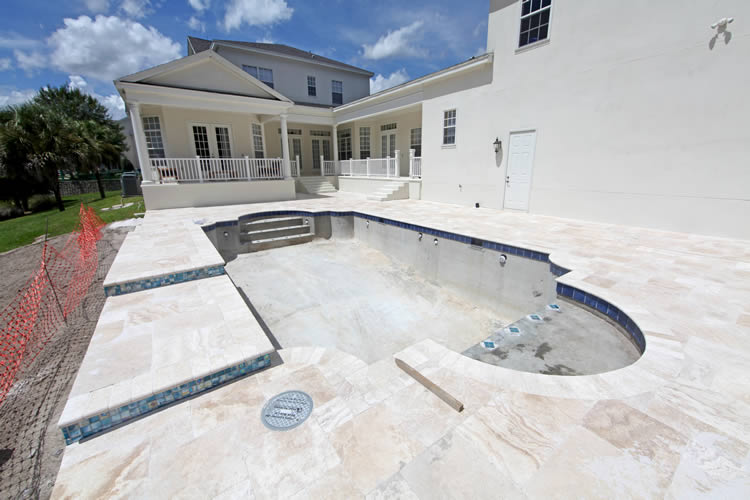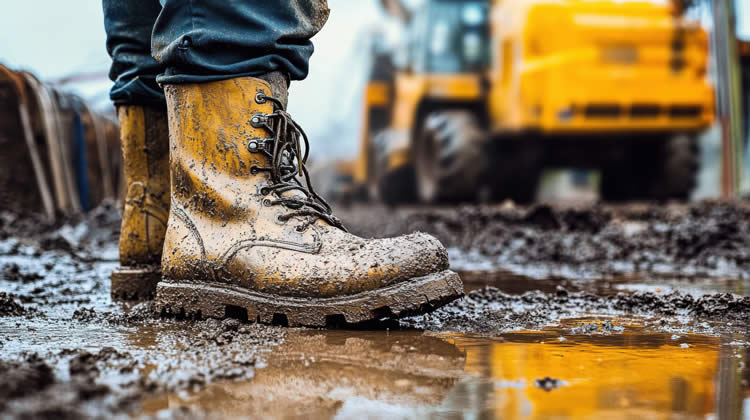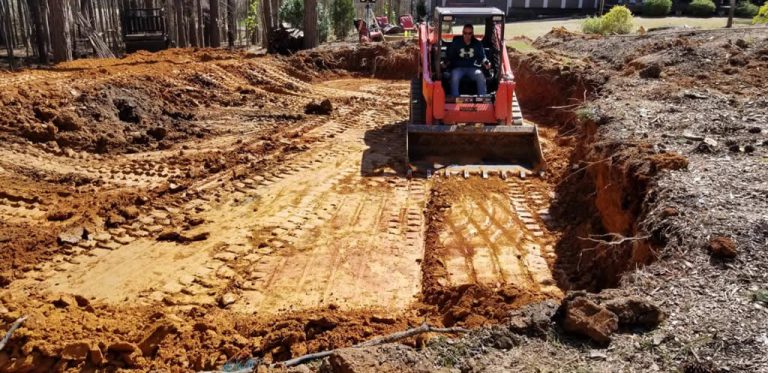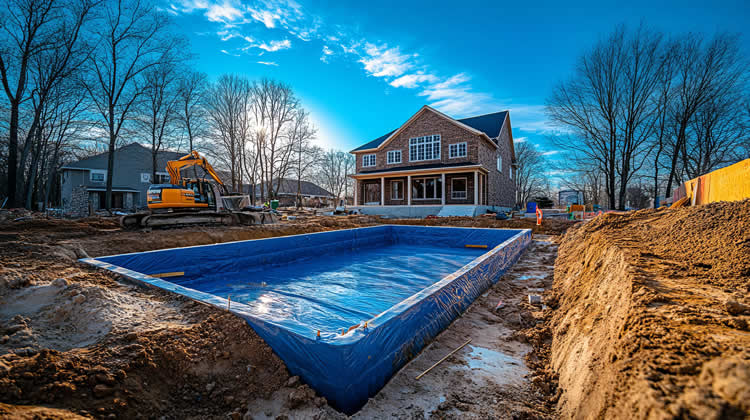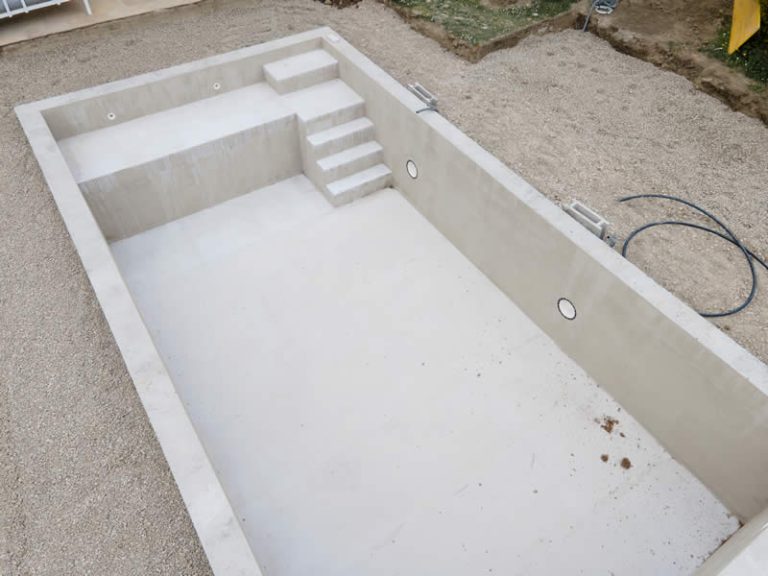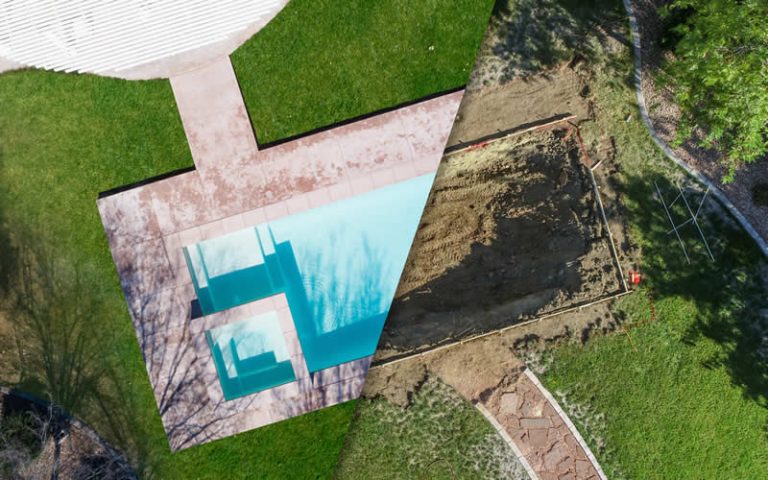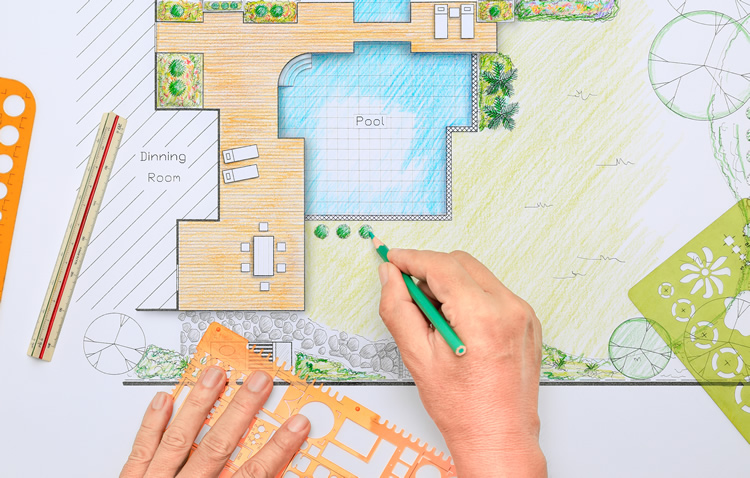Common Pool-Building Mistakes Homeowners Can Avoid
You’d be surprised how often homeowners get halfway through building a pool and realize something big got missed — a permit issue, a drainage problem, or even a simple miscommunication about how deep the shallow end should be.
It happens all the time, and most of the time, it’s not because anyone meant to make a mistake. It’s because pool construction involves a lot of moving parts — design, engineering, plumbing, electrical, concrete, landscaping — and it only takes one weak link to throw the whole project off course.
The good news? Every one of these mistakes can be avoided with some upfront planning and a builder who knows how to guide you through the process.
Mistake #1: Choosing the Wrong Builder
We’ve talked about this before, but it’s worth repeating — your builder is the single biggest factor in your pool’s success.
The wrong contractor can turn your dream project into a nightmare of delays, cost overruns, and half-finished work. The right one keeps you informed, stays on schedule, and handles problems before you even notice them.
Look for experience, licensing, and a real physical presence — not just a logo and a cell phone number. If they’re hesitant to provide references, walk away. You’re not just hiring someone to dig a hole; you’re hiring someone to manage your investment.
Mistake #2: Not Planning for the Entire Backyard
Many homeowners focus only on the pool itself — shape, depth, finish — without thinking about the space around it.
Ask yourself: Where will people sit? How will water drain off the deck? Is there shade nearby? What about storage for floats or pool equipment?
A well-designed backyard works as a complete environment. The pool, patio, lighting, and landscaping should all feel connected. When those pieces are planned together, you end up with a space that’s beautiful and functional.
It’s far more expensive to add things like extra decking or outdoor kitchens later than to plan them during design.
Mistake #3: Ignoring Drainage and Elevation
This one’s huge in Georgia. Our red clay soil doesn’t drain easily, which means water tends to pool (no pun intended) in low spots.
If your builder doesn’t design proper drainage, that water will eventually find its way into the pool, under the decking, or even toward your foundation.
Elevation planning — how the yard slopes — is a critical part of the process. We often bring in laser levels and grading maps before we ever break ground. It’s not glamorous, but it’s the difference between a pool that lasts 30 years and one that cracks after the first heavy rain.
Mistake #4: Building Too Small
Here’s something I tell almost every client: Nobody ever says, “I wish I’d built a smaller pool.”
It’s a common budget trap. Homeowners try to save a few thousand dollars by shaving a foot here or there, but once the water’s in, the pool feels smaller than expected — especially when you start adding floats, kids, or guests.
That doesn’t mean you need the biggest pool on the block, but think carefully about how you’ll actually use it. If you like to swim laps or host gatherings, plan for it now. Resizing later means tearing out concrete — and that’s a lot pricier than a few extra yards of excavation.
Mistake #5: Skipping the Permit Process
Permits can feel like a hassle, but they protect you and your investment. In most Georgia counties, pools require building, electrical, and sometimes gas permits.
A reputable builder handles all of this for you. If a contractor suggests “working around” permits to save time or money, that’s a major red flag.
Without permits, you could face fines, delays, or worse — be forced to remove part of your pool to bring it up to code. Plus, it can cause problems later if you ever sell the home.
Mistake #6: Rushing the Design Phase
Design is where you should slow down, not speed up. This is where functionality, aesthetics, and budget all meet.
It’s easy to get carried away by 3D renderings and Pinterest photos, but a pool needs to fit your property and your lifestyle — not just your imagination.
Ask questions. Talk through equipment options. Think about sunlight, privacy, and traffic flow. The more you iron out on paper, the fewer surprises you’ll have once construction begins.
Mistake #7: Forgetting About Maintenance
Every pool — fiberglass, vinyl, or gunite — requires some level of upkeep. Filters need cleaning, chemicals need balancing, and surfaces need brushing.
Too often, homeowners underestimate this part and end up frustrated.
Talk with your builder about maintenance expectations upfront. Ask whether they offer service packages or startup guidance. Understanding what it takes to keep your pool clean will help you make better choices about materials and equipment now.
Mistake #8: Ignoring Long-Term Costs
The upfront price of the pool is only part of the story. Pumps, heaters, and lights all draw power, and chemical usage varies depending on the type of pool and how it’s maintained.
Smart homeowners ask for an estimate of operational costs — energy, maintenance, and seasonal expenses — before they sign the contract.
Choosing efficient equipment like variable-speed pumps or LED lights can pay for itself within a couple of years. It’s not just about saving money; it’s about designing a pool that’s sustainable for your lifestyle.
Mistake #9: Poor Communication
Construction is a process — things change, questions pop up, and unexpected delays happen. The worst mistake a homeowner can make is not staying engaged.
You don’t need to micromanage, but you should stay informed. Ask for weekly updates. Know who your point of contact is. Keep communication open so small issues don’t turn into big misunderstandings.
A good builder encourages this kind of transparency. The goal isn’t to keep you out of the loop; it’s to make sure everyone’s on the same page all the way through.
Mistake #10: Skipping the Final Walkthrough
By the time the pool’s filled and the crew is cleaning up, most people are so ready to swim they’ll skip the final inspection. Big mistake.
This is your chance to learn how everything works — valves, timers, automation systems — and to make sure every item on the punch list is complete.
Take your time. Ask questions. Your builder should walk you through everything patiently. A 30-minute walkthrough now can save you hours of frustration later.
The Takeaway
Most pool-building mistakes aren’t dramatic — they’re small oversights that snowball over time. The best defense is simple: work with a reputable builder, stay involved, and don’t rush the process.
When you plan well, communicate clearly, and trust experience, the result is a backyard you’ll love for decades — not one you’ll spend years fixing.
That’s the real secret to a perfect pool build: not luck, but preparation.
Let’s Talk …
Let us take care of your Pool & landscape
At Aqua Fun, we don’t just build pools — we build relationships that last for seasons to come. Our team takes the time to understand your space, your needs, and how you actually use your backyard. Then we craft solutions that make every swim, soak, or gathering more enjoyable. It’s not about selling you more; it’s about helping you get it right.
If you’ve been thinking about improving, repairing, or re-imagining your pool, let’s talk. We’ll meet you where you are, explain your options clearly, and make sure the whole process feels simple and stress-free. That’s the Aqua Fun way — real people, real care, and results that speak for themselves.
Mon – Fri
8:00 – 6:00

